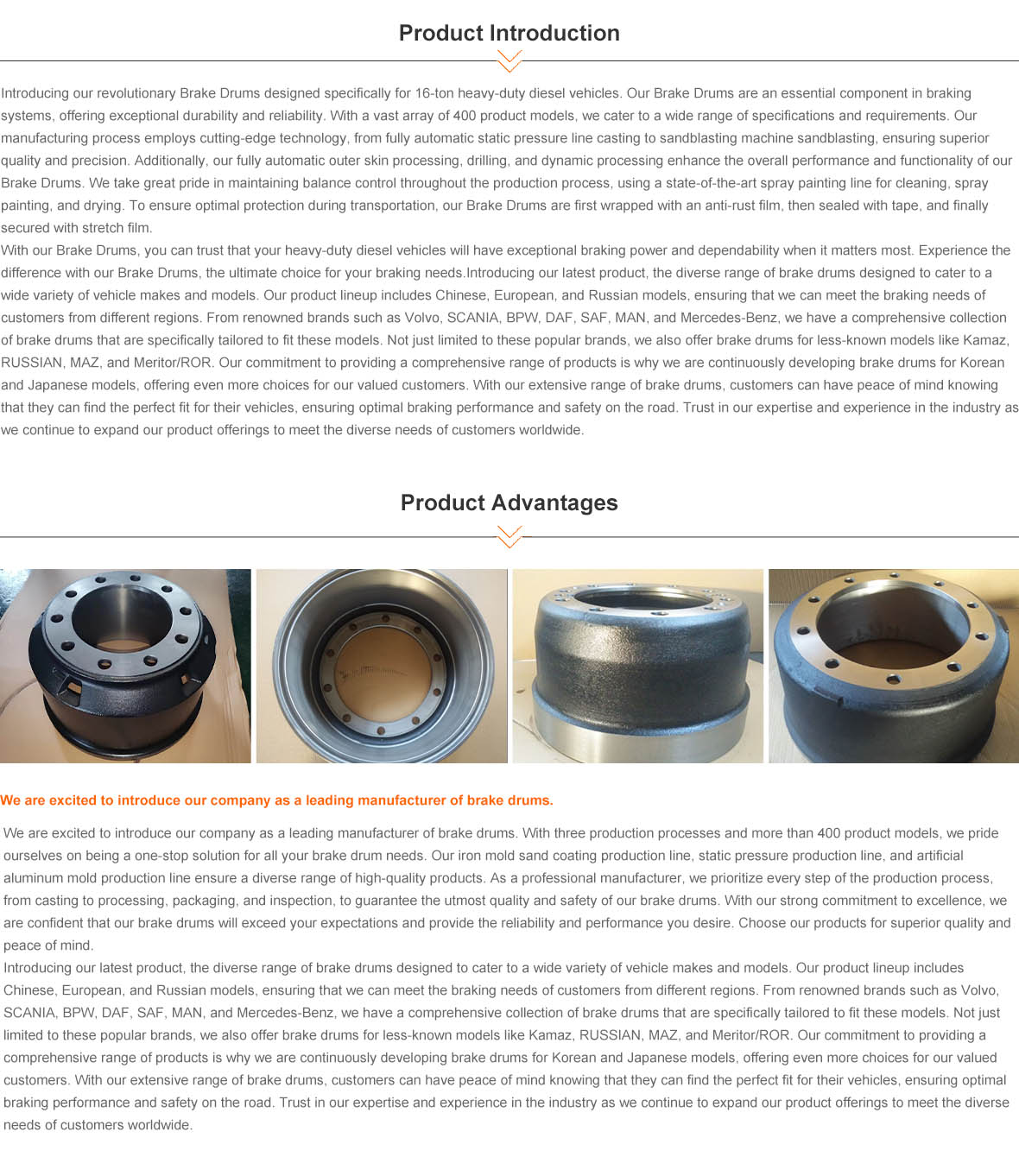Understanding the Function and Mechanics of Drum Brakes in Vehicles
What Are Drum Brakes?
Drum brakes are a vital component of many automobiles, offering a reliable means of slowing down or stopping a vehicle. While disc brakes are prevalent in modern vehicles, drum brakes continue to be used, particularly in older models, trucks, and buses due to their durability and cost-effectiveness. Understanding the mechanics and advantages of drum brakes is crucial for anyone interested in automotive technology.
The Basics of Drum Brakes
A drum brake system consists of several key components the brake drum, brake shoes, and a wheel cylinder. The brake drum is a cylindrical component attached to the wheel hub. When the brake pedal is pressed, hydraulic fluid from the master cylinder is directed to the wheel cylinder, which is positioned inside the drum. This fluid activates the wheel cylinder, forcing the brake shoes outward against the inner surface of the drum. The friction generated by this contact slows down the wheel's rotation, thereby decelerating the vehicle.
One of the defining features of drum brakes is the way they engage and distribute force. When force is applied, the shoes pivot outward in a wedging action, increasing the grip on the drum surface. This design makes drum brakes particularly effective in providing strong braking power. They can generate high friction even at low pressure, making them responsive to lighter braking applications.
Advantages of Drum Brakes
Drum brakes offer several advantages that explain their continued use, especially in specific vehicle categories. One of the primary benefits is their resistance to fading. When brakes become overheated from prolonged use—such as during heavy braking—traditional disc brakes can lose their effectiveness. However, drum brakes are constructed in a way that allows them to dissipate heat more evenly across the drum, reducing the likelihood of fade.
Another significant advantage is their compact size. Drum brakes occupy less space compared to disc brake systems, making them ideal for vehicles with limited wheel space or those designed for heavier loads. This compact design allows manufacturers to optimize the layout of vehicles, contributing to more efficient designs in large trucks and buses.
what are drum brakes

Cost is a critical factor in vehicle construction and maintenance. Drum brakes are generally less expensive to manufacture and install than disc brakes. Their simpler design contributes to lower production costs, which can be beneficial for budget-conscious fleets or used vehicle markets where affordability is paramount.
Disadvantages of Drum Brakes
However, drum brakes do have some disadvantages. While they are durable, they can be more challenging to service than disc brakes. The enclosed nature of the drum makes inspection and maintenance less accessible, making routine checks more labor-intensive. Users may find that when drum brakes need repairs, the costs and time involved can be higher than for disc brakes.
Moreover, while they are effective in many scenarios, drum brakes tend to perform less efficiently than disc brakes under extreme braking conditions. Disc brakes typically offer better overall stopping power and responsiveness, especially as speeds increase. This can make them more suitable for high-performance vehicles or applications where rapid and frequent braking is necessary.
When Are Drum Brakes Used?
Today, drum brakes are often used in rear brake applications, while disc brakes dominate the front brakes of most modern vehicles. This configuration allows manufacturers to leverage the strengths of both systems. In addition, many commercial vehicles, such as buses and heavy trucks, still utilize drum brakes due to their durability and capability to handle heavy loads.
Conclusion
In conclusion, drum brakes are an essential component in the automotive braking systems, especially in specific applications. Their unique design offers several advantages, including cost-effectiveness and resistance to brake fade. However, they also present some drawbacks related to maintenance and performance under extreme conditions. Understanding how drum brakes operate and where they are best applied is crucial for anyone involved in automotive maintenance, engineering, or simply as an informed vehicle owner. As technology evolves, it remains to be seen how the balance between drum and disc brake systems will adapt, but for now, drum brakes continue to play a significant role in our vehicles.
-
The Power and Reliability of Brake DrumsIindabaAug.27,2025
-
The High-Quality Truck Brake DrumsIindabaAug.27,2025
-
Quality Brake Drums for Reliable PerformanceIindabaAug.27,2025
-
Get the Quality Semi Trailer Brake Drums for Your FleetIindabaAug.27,2025
-
Everything You Need to Know About Brake DrumsIindabaAug.27,2025
-
Enhance Your Vehicle's Performance with Reliable Brake DrumsIindabaAug.27,2025
-
Truck Drum Brake Spring Replacement ProcedureIindabaAug.22,2025


